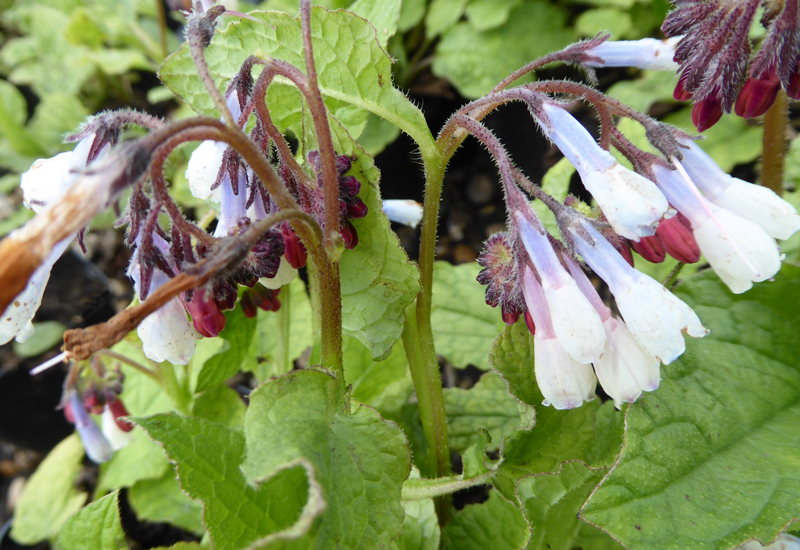

Cultural Conditions: Light: Full sun (6 or more hours of direct sunlight a day) Partial Shade (Direct sunlight only part of the day, 2-6 hours) Soil Texture: Clay Loam (Silt) Sand Soil pH: Acid (8.0) Neutral (6.0-8.0) Soil Drainage: Good Drainage Moist Available Space To Plant: 12 inches-3 feet NC Region: Coastal Mountains Piedmont USDA Plant Hardiness Zone: 5b, 5a, 6b, 6a, 7b, 7a, 8b, 8a.Whole Plant Traits: Plant Type: Ground Cover Perennial Habit/Form: Clumping Horizontal Spreading Growth Rate: Rapid Maintenance: Low Texture: Coarse.Attributes: Genus: Symphytum Species: grandiflorum Family: Boraginaceae Life Cycle: Perennial Recommended Propagation Strategy: Division Root Cutting Country Or Region Of Origin: Caucasus and Europe Wildlife Value: It is pollinated by bumblebees, honey bees, and mason bees.Tags: #showy flowers #heat tolerant #drought tolerant #perennials #weedy #shade garden #fast growing #spreading #deer resistant #rhizomes #herbaceous perennials #agressive #groundcover #rhizomatous #naturalizes #border planting #hairy leaves #naturalized area #border front #shade border #clay soils tolerant #rough leaves #dense growth #broadleaf #showy Pink buds open to blue flowers that fade to white. See this plant in the following landscape: Cultivars / Varieties: Slugs and snails can be a minor problem. It spreads by rhizomes that can be aggressive. Attempting to dig plant up for transplanting or removal can leave some roots that will sprout new plants. Insects, Diseases, and Other Plant Problems: No serious insect or disease issues. Converted to a tea-like liquid can also be used for feeding other plants. It can then be used as a fertilizer when added to a compost pile.

Its seeds ripen from June through July.Ĭalled an accumulator, this plant gathers and stores nutrients from the soil that are in a more bioavailable form. This flowers have both male and female organs that are pollinated by bees. A soil that is organically rich is an added boost.

It is best grown in a location providing full sun to part shade and good drainage. It spreads by creeping rhizomes and forms an attractive groundcover. The roots have underground stems that form additional roots and shoots along their length. Often grown in borders or shade gardens due to its dense foliage and attractive spring flowers. See below DescriptionĬomfrey is a perennial groundcover in the Boraginaceae (borage) family native to Europe. Phonetic Spelling sim-FY-tum gran-dih-FLORE-um This plant has low severity poison characteristics.


 0 kommentar(er)
0 kommentar(er)
